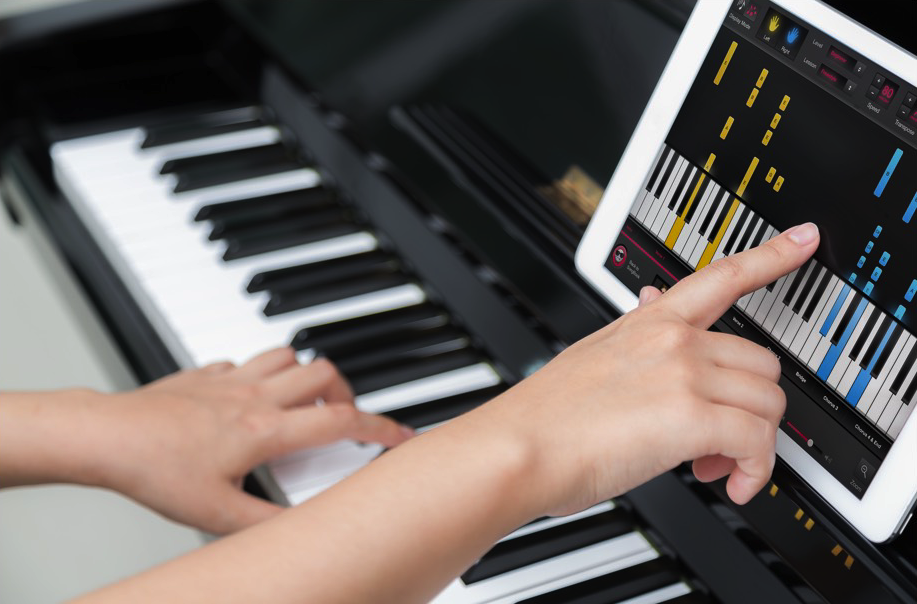Who invented the piano?
Bartolomeo Cristofori. That name probably doesn’t ring a bell, does it? But it should strike a note in your mind. This is the name of the one who started it all – the man who invented the piano. Without him, none of us would be here today, learning how to play on the piano or reading insightful blog posts – say goodbye to Keyboard Cat! We’ve got a lot of history thanks to this inventor.
Where was the piano invented?
Before we fetch a TARDIS and travel back to 18th Century Italy (circa. 1700) to witness the birth of the piano, we must first stop and think. Musical instruments have been an integral part of human society for the past 40,000 years. Our creative ancient ancestors produced sounds by experimenting (or playing?) with strings (no, not like cats, more like guitarists). Regarding the scope of this musical timeline, it’s fascinating to consider just how recent and new the piano’s advent is. Just think of what’s going to be out there in the next 100 years! For more on the future of pianos, please see the next article in this series which will be published coming soon. 😀

When was the piano invented?
Now back to our time travels. In 1688, Cristofori was selected to care for the Florentine court of Grand Prince Ferdinando de Medici’s musical collection, including harpsichords. He was known to be a very skilled harpsichord maker, and had lots of opportunities with this new job. According to the Metropolitan Museum of Art in New York, in 1700, there was a new instrument amongst the Medici’s vast collection; an “arpicimbalo,” which was “an instrument resembling a harpsichord, ‘newly invented by Bartolomeo Cristofori’ with hammers and dampers, two keyboards, and a range of four octaves, C–c.”
Why was the piano invented?
What is a harpsichord, you ask? Well, in the 14th – 15th centuries, “stringed instruments with a keyboard” started to become prominent in Europe. One of these instruments was the harpsichord. It is similar to the piano in that it is also a string instrument but the harpsichord only has one volume and doesn’t have a variation between its softness and loudness when played. You think, that’s not a big deal? Well watch this then. As a result, there wasn’t much room for expression and creativity with this instrument and there was now a demand for a keyboard instrument that could do this. And voila! That’s how the piano was born.
Note: Pianoforte is not a synonym for passive-agressive. 😛
How was the piano invented?
Scipione Maffei, a journalist, wrote a description about this invention in 1711, calling it a “gravicembalo col piano, e forte” (“harpsichord with soft and loud”). This name indicated that the piano has the ability to change loudness based on the pressure placed on the piano notes, showing its clear distinction to the harpsichord. Musicians were now able to “alter the loudness and tone with the force of their fingers,” giving them room for more controlled expression. The name was later shortened to pianoforte, and then further shortened to the name we all know and love today, the piano. By the end of the nineteenth century, no middle-class household of any importance in Europe or North America was without one, so it started to play a role in people’s lives very quickly. You can actually find the earliest surviving piano from 1720 on display at the Metropolitan Museum of Art, which as you can see in the below video, sounds completely different to today’s piano.
I wonder what modern popular songs would sound like on this. 💡
Besides this, you can also see Cristofori’s 1722 piano at the Museo Strumenti Musicali in Rome, and the 1726 one at the Musikinstrumenten-Museum in Leipzig, Germany.

As you can already tell, Cristofori was an innovator who figured out various technical problems that still puzzled various other “piano designers for the next 75 years of its evolution.” He designed a mechanism that allowed a hammer to hit a string when there was pressure placed on the piano notes, which is what made this attempt successful. There is much to be celebrated about Cristofori’s achievement and the invention of the piano. As a matter of fact, on May 24, 2015, Cristofori’s 360th birthday, google users were greeted by an animated doodle of him playing the piano at different volumes, piano (soft) and forte (loud). Seriously, who doesn’t love a good doodle? 😉

Now you know the story behind the invention of piano notes
So, to conclude, we beg to ask: How many of you knew who Bartolomeo Cristofori was prior to reading this? And what song would you like to hear being played on the 1720 version of the piano? If you’d ask me, I’d say it would be interesting to hear Alan Walker’s “Faded,” just to see a clash of new and old.
Sources:
1: BBC: Did early humans, or even animals, invent music?
2: Piano Notes: A key note of musical history
3: Met Musuem: The Piano – The Pianofortes of Bartolomeo Cristofori (1655–1731)
4: Pianonet: History of the Piano
5: Britannica: Bartolomeo-Cristofori
6: Piano Technicians Guild: History of the Piano
















1 Comment
[…] through it, in a personal language, becomes incredibly important.’” After all, the piano was invented because there was a desire for more creativity and expression in music. So, it makes sense that it […]